A decade or so ago, the gluten-free diet was rather rare, mostly reserved for people diagnosed with celiac disease, which is an autoimmune condition triggered by an allergy to gluten. However, the increase in the awareness of celiac disease and non-celiac gluten sensitivity (NCGS), as well as the potential inflammatory nature of gluten has rapidly exploded the popularity of going gluten-free.
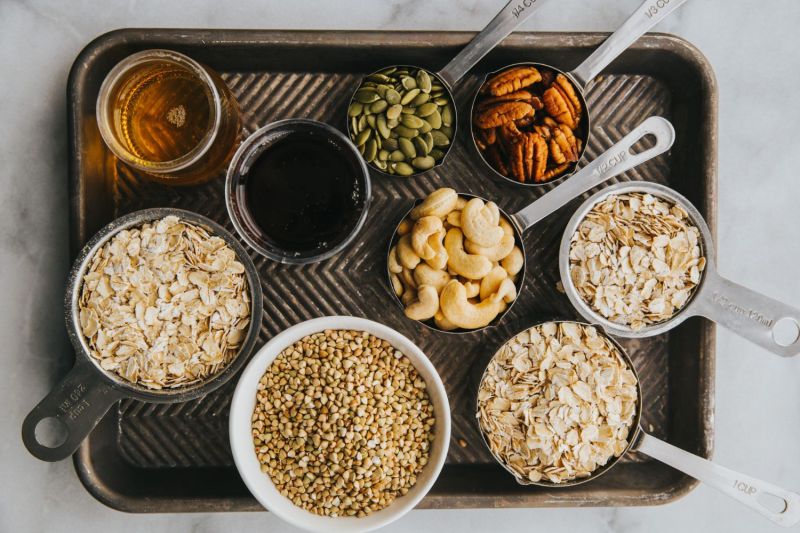
Going gluten-free or adopting a gluten-free diet can be overwhelming when you first get started. Many of the common food products found in the typical American diet and lining the grocery shelves contain gluten, which is a protein found in grains like wheat, barley, and rye, along with malt. Gluten is also found as an additive in sauces, soups, processed meats, and even some hair care and bath products, so if you need to strictly adhere to a gluten-free lifestyle, the initial overhaul of your diet can be challenging. Don’t worry; below, we give you some tips, recommended brands, and suggestions to take the stress out of going gluten-free.
Food
The bulk of the changes you’ll need to make in your life when going gluten-free pertain to the food and beverages you consume. A gluten-free diet eliminates all gluten-containing foods, such as those with wheat, rye, barley, and malt.
Bread and bread products like bagels, English muffins, pita, wheat tortillas, biscuits, hamburgers, and hot dog buns, dinner rolls, and bread crumbs are among the most obvious places to start when switching to a gluten-free diet. Nearly all conventional bread products on the shelves contain wheat flour, so they are not gluten-free. Fortunately, there are now tons of gluten-free alternatives for nearly any kind of bread product.
Gluten-Free Bread: Eban’s Bakehouse Fresh Baked Gluten-Free Bread
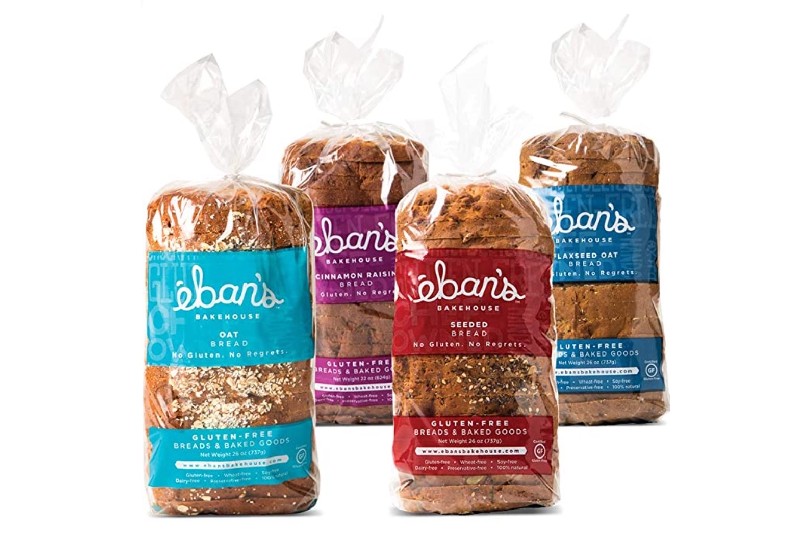
For standard bread, we love Eban’s Bakehouse Fresh Baked Gluten-Free Bread. It comes in delicious flavors like Cinnamon Raisin, Flaxseed Oat, Seeded, and Oat. The bread always tastes fresh, and the texture is exactly like normal bread. Besides being gluten-free, Eban’s Bakehouse Fresh Baked Gluten-Free Bread is 100% natural, free from soy and dairy, and contains no preservatives. They are made from pure, organic, locally farm-sourced fresh ingredients and use wholesome gluten-free oat and rice flours.
Gluten-Free Snacks: Brazi Bites
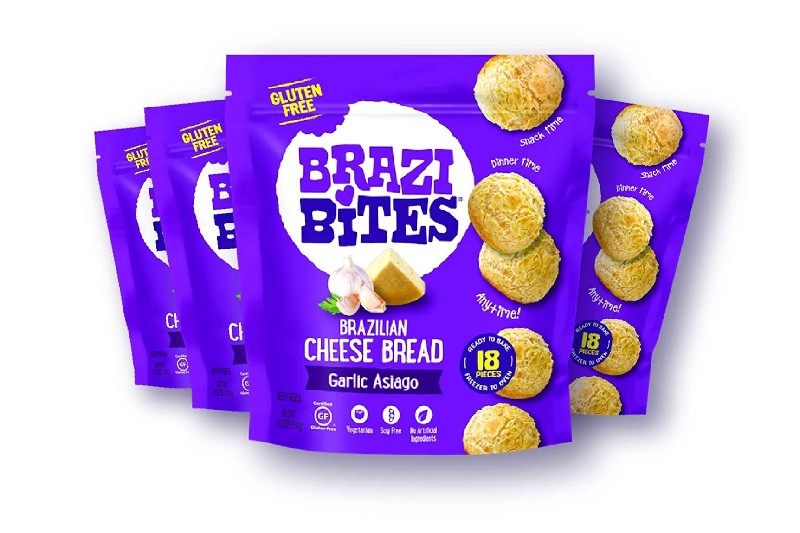
If you’re looking for a great gluten-free snack to replace something like pizza bites, cheesy bread, or fun party appetizers, you’ll be thrilled with the gluten-free options from Brazi Bites. These frozen balls of goodness come in flavors like Garlic Asiago and Pizza. They are gluten-free, soy-free, contain no artificial ingredients or preservatives, are made with just a few simple ingredients, and have a deliciously chewy texture. They can even serve as a great gluten-free garlic bread substitute for pasta night.
Gluten-Free Cookies: Enjoy Life Foods Soft Baked Cookies

We all like a sweet treat every once in a while and for a tasty gluten-free indulgence, dig into the Enjoy Life Foods Soft Baked Cookies. These cookies are amazingly moist and have a wonderful soft chew. They come in delicious flavors like Double Chocolate Brownie, Chocolate Chip, and Snickerdoodle. The gluten-free cookies are also free from the top 14 food allergens, such as soy, egg, dairy, tree nuts, peanuts, and more. They are all-natural, vegan, halal, and kosher.
If you’re a cookie lover, even conventional brands now offer gluten-free cookies. For example, Nabisco has gluten-free Oreos, and they taste nearly identical to the original recipe!
Gluten-Free Cereal: Nature’s Path Organic Gluten-Free Mesa Sunrise Flakes Cereal
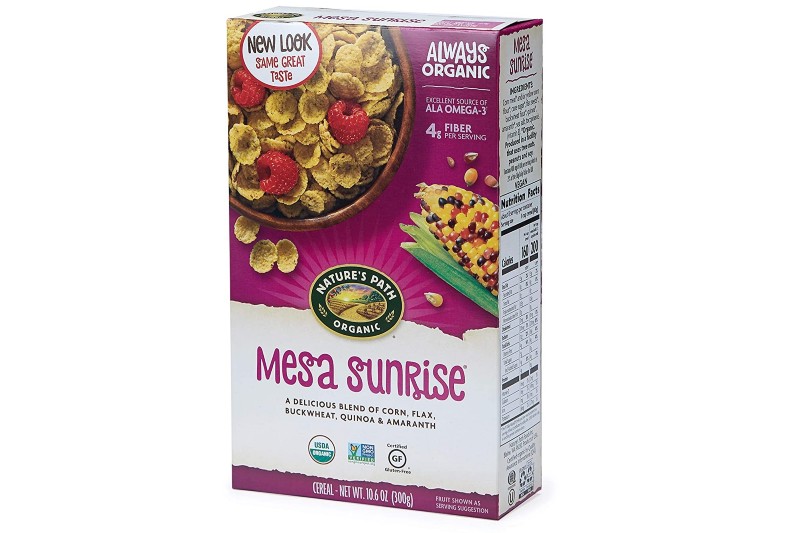
Starting your day with a bowl of cereal doesn’t have to come to an end once you go gluten-free. There are tons of healthy gluten-free breakfast cereals these days. They use alternative grains like corn, rice, millet, or arameth, or may not use grains at all. For example, Three Wishes high protein cereals are grain-free and use chickpea flour among other ingredients.
One of the best gluten-free cereals is Nature’s Path Organic Gluten-Free Mesa Sunrise Flakes Cereal. It comes in a variety of flavors and has just a hint of sweetness and is a textural wonderland. The gluten-free flakes are made from organic corn, quinoa, buckwheat, amaranth, ancient grains, and omega-3 rich flax seeds. The cereals are non-GMO, organic, vegan, kosher, gluten-free, and low sugar.
If you’re looking for something sweeter and child-friendly, look into gluten-free Chex (the Cinnamon is great) or gluten-free Cheerios. There are several flavors that do not contain gluten.
One other note on cereals: Though oats don’t naturally contain gluten, they are often processed on equipment that other gluten-containing grains use, rendering them not gluten-free. Look for oats and granola marked gluten-free. Quaker and Bob’s Red Mill have many options, among plenty of others.
Gluten-Free Pasta: Barilla Chickpea Pasta
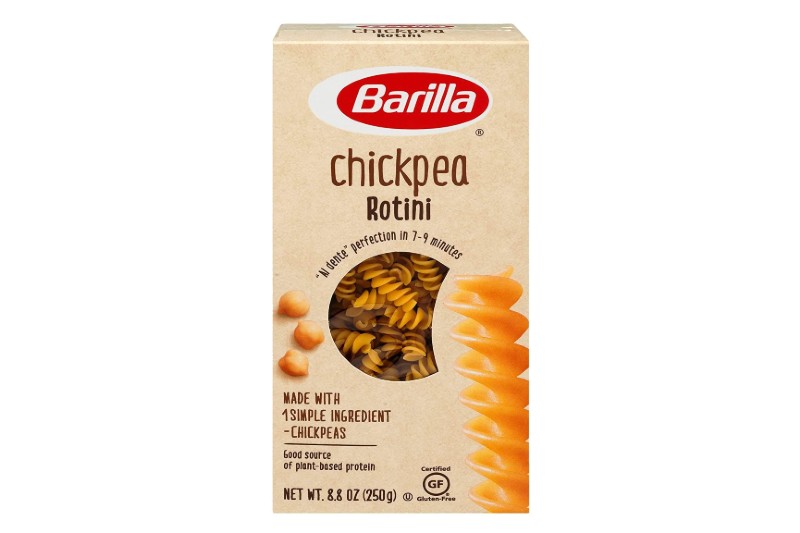
It used to be difficult to find gluten-free pasta outside of niche natural grocery stores. Now, there are all sorts of options. Most gluten-free pasta are made from rice or brown rice, and these are perfectly suitable, but they are very low in protein and fiber. To boost the nutritional value, look for grain-free pasta like those made from lentils, chickpeas, or other legumes. Barilla Chickpea Rotini Pasta is a great option. It’s made entirely from non-GMO chickpeas, so it’s vegan, gluten-free, grain-free, and packed with protein and fiber (19 grams of protein per serving). It has a pleasant al dente texture and a neutral flavor, allowing it to take on the flavors of your favorite sauce or cheese—just like normal pasta.
Gluten-Free Pancakes: Kodiak Cakes Gluten-Free Protein Pancake Mix
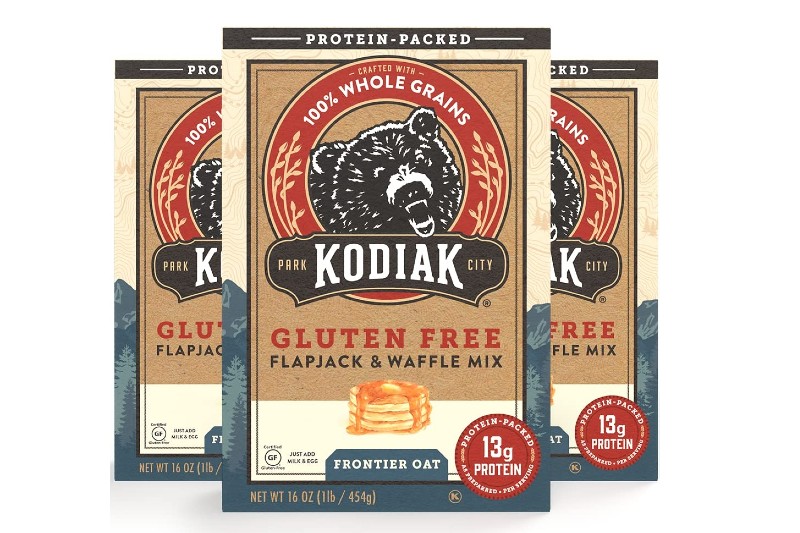
When you want a hearty family breakfast with a stack of pancakes, you can use Kodiak Cakes Gluten-Free Protein Pancake Mix. It’s also suitable for waffles. This gluten-free mix is made with non-GMO gluten+free oat flour and is packed with 13g protein and 5g of fiber per serving. All you have to do is add water and you can whip up a stack of more nutritious pancakes than you’d typically find.
Gluten-Free Flour: Bob’s Red Mill Gluten Free 1-to-1 Baking Flour
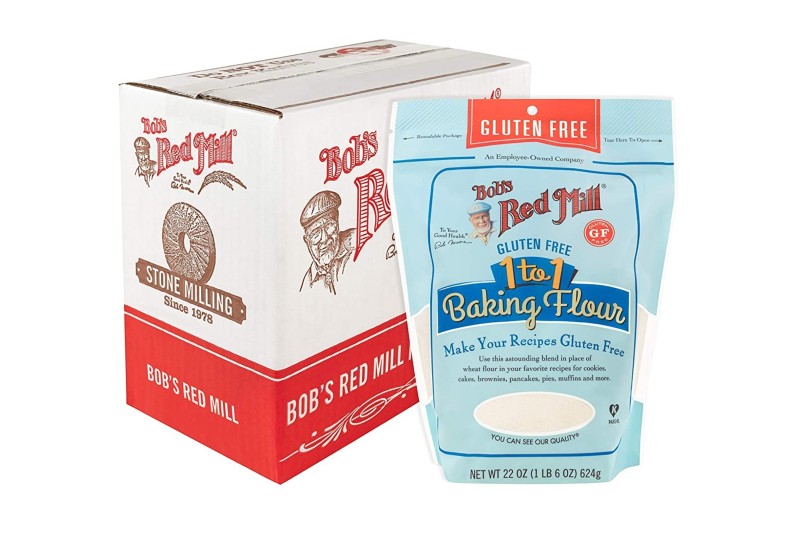
Standard flour and baking mixes are certainly a no-go on a gluten-free diet. There are lots of gluten-free flour alternatives, but if you’re going to be doing much baking, Bob’s Red Mill Gluten Free 1-to-1 Baking Flour is the easiest way to go. It can be used exactly like standard all-purpose flour without any recipe modifications. It’s light, tasty, and simple to use in anything from homemade bread to muffins, cakes, pancakes, or coating fried chicken.
Gluten-Free Beer: Glutenberg
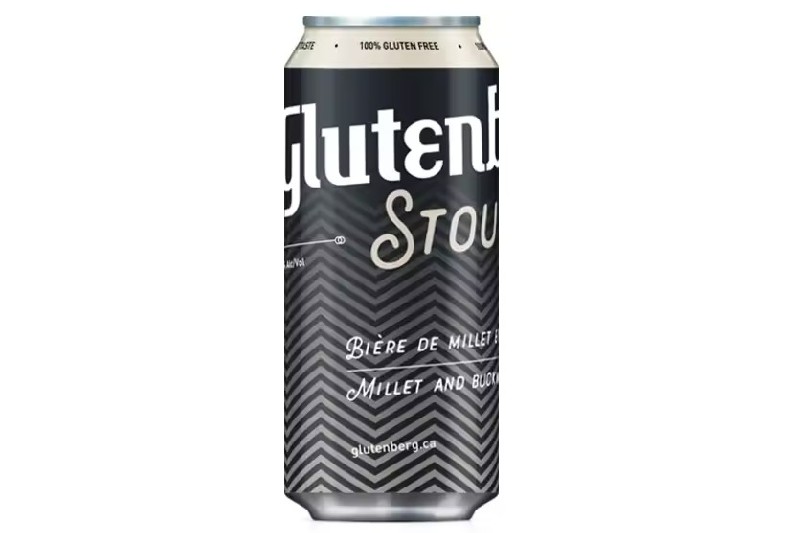
For beer lovers, going gluten-free can feel like you’re losing something you truly enjoy. Most beer contains barley, wheat, or malt, so it is not permitted on a gluten-free diet. Fortunately, there are some convincing gluten-free beers these days, and even some dedicated gluten-free breweries. We love all the beers from Glutenberg Brewery. They have everything from a dark, satisfying stout to a hoppy gluten-free IPA.
Other Foods
Gluten is a sneaky ingredient in other less obvious food items. Anything breaded, like some French fries or chicken nuggets, will contain gluten unless marked gluten-free, so be cautious when buying these products. Sauces and dressings often contain gluten, especially soy sauce and gravies. Processed meats, such as hot dogs and lunch meats, also typically contain gluten, though gluten-free varieties are available. Some pickles and canned soups contain gluten as do nearly all bullion cubes. You can make hearty gluten-free soups at home.
Ice cream that contains cookies or add-ins like pieces of ice cream cone also contain gluten, but you can choose gluten-free ice creams by selecting basic flavors or that are specifically labeled as gluten-free.
Keep in mind that there are tons of highly nutritious, naturally gluten-free foods like vegetables, fruits. legumes, seeds, eggs, nuts, fish, lean protein, and nuts. These foods should comprise the bulk of your diet.
Body Care
If you have celiac disease, it’s not enough to follow a gluten-free diet. You’ll also need to eliminate gluten from body products like shampoo, toothpaste, and makeup. Most toothpaste and mouthwashes these days are gluten-free, but if you’re very sensitive, it’s prudent to verify before use. Shampoos are another story because wheat is used in many hair care products.
Challenger Men’s Tea Tree Shampoo and Conditioner
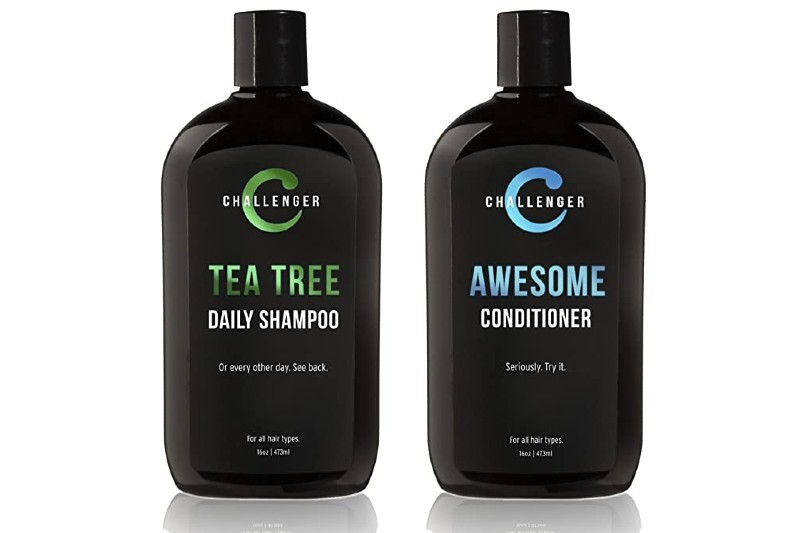
For men going gluten-free, we recommend Challenger Men’s Tea Tree




